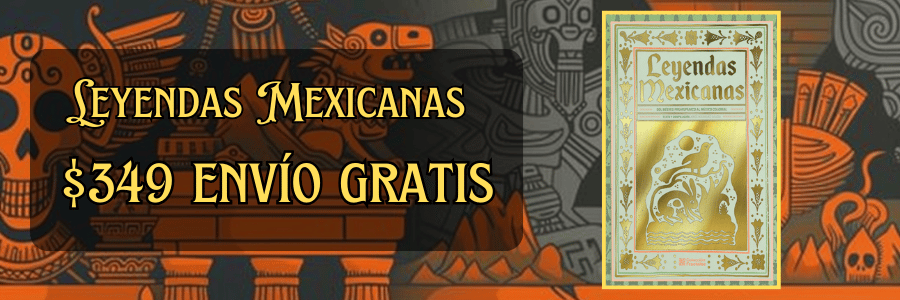The Maya Astronomy: Venus, the Sun, and Celestial Events
The Maya civilization is often regarded as one of the most advanced and sophisticated societies of pre-Columbian America, with remarkable achievements in architecture, mathematics, and astronomy. Among these achievements, their understanding of celestial events, particularly the movements of the Sun and Venus, is noteworthy. The Maya's astronomical observations were tied intricately to their agricultural calendar, religious ceremonies, and social organization. Through an extensive study of the heavens, they crafted intricate calendars that would influence their way of life, informing decisions about planting and harvesting, religious rituals, and even political events.
At the heart of Maya astronomy lies a profound reverence for celestial bodies. The Maya believed that the heavenly bodies, including the Sun, Moon, and various planets, were divine or supernatural entities with direct connections to human affairs. This belief prompted an extensive study of the starry sky, leading to a comprehensive understanding of cyclical events and seasonal changes. Among the various celestial bodies observed by the Maya, Venus held a unique significance that distinguished it from others. This planet, known as Tzolk’in or Chak in various texts and inscriptions, was perceived as a harbinger of warfare and conflict, as well as a marker of time and agricultural cycles.
The Maya meticulously tracked the synodic period of Venus, which is the length of time it takes for Venus to return to the same position relative to the Earth and Sun. This period spans approximately 584 days. Because of its bright luminosity, Venus is visible to the naked eye and frequently appears in both the morning and evening sky. The Maya identified its cyclical nature, associating the planet with distinct time frames that dictated certain societal behaviors. They incorporated these observations into their calendrical system, leading to a complex interplay between astronomy and societal norms. Based on their calculations, the Maya developed the Dresden Codex, one of the few pre-Columbian texts that detail their astronomical observations.
Solar movements were also crucial to Maya astronomy. The Sun was central to their cosmology and was personified in various gods associated with life, fertility, and sustenance. The Maya set up their cities, temples, and ceremonial centers in alignment with solar events such as solstices and equinoxes. They understood the significance of the Sun's trajectory and its seasonal alterations, which informed their agricultural practices. The summer and winter solstices, occurring around June 21 and December 21 respectively, marked the longest and shortest days of the year, and their identification played a vital role in aligning their crops with the Earth’s solar rhythms.
Calendrical systems used by the Maya were intricate and multifaceted, primarily revolving around two main cycles: the Tzolk'in, a 260-day cycle, and the Haab’, a 365-day solar calendar. The Tzolk'in consisted of thirteen numbers and twenty named days that complemented one another in forming a unique system. The Haab’, on the other hand, arranged the solar cycle into eighteen months of twenty days each, plus an additional five “nameless” days at the end of the year. These two cycles functioned together to guide the Maya in various aspects of social life, religious observance, and agricultural ventures.
The calculations of celestial events largely dictated not only when to plant or harvest but also when to conduct religious rituals or engage in warfare. Aligning a battle or regional decision with celestial phenomena such as the heliacal rise of Venus was thought to confer divine favor. This correlation between the cosmos and daily life shows how intimately the Maya understood and connected their lives to the rhythm of the universe.
Maya cities prominently featured structures built as observatories, such as pyramids and temple complexes, constructed with meticulous attention to celestial alignments. The pyramid of El Castillo at Chichén Itzá is a striking example, showcasing the understanding of astronomy within its architecture. During the equinoxes, a shadow cast by one of its staircases creates the illusion of a serpent slithering down the pyramid, a representation of Quetzalcoatl, the feathered serpent god. Such architectural design illustrates the Maya’s desire to merge space and time while further solidifying the relationship between their civilization and celestial cycles.
Furthermore, the Maya were skilled in recording and predicting eclipses. They demonstrated an impressive ability to distinguish between solar and lunar eclipses, which were viewed as significant omens. Their records indicate that they understood the patterns and frequencies of these eclipses and were able to forecast them accurately. The importance of eclipses was not merely astronomical, but cultural; such events were interpreted through the lens of mythology, and ceremonies were often aligned with these occurrences, underscoring the interplay between astronomy, religion, and daily life.
While the understanding of planets and the solar cycle was well developed, the Moon also played an essential role in Maya astronomy. Similar to the Sun and Venus, lunar phases influenced agricultural activities and socio-political events. The Moon's monthly cycle dictated ritual calendars and marked the passage of time between significant events. The Maya recognized the importance of both solar and lunar cycles, effectively employing both in their agricultural calendars.
The preservation of Maya astronomical knowledge is largely attributed to their codices, intricate books created from tree bark or animal hides that contained illustrations, hieroglyphs, and mathematical system indicators. The most famous of these codices is the Dresden Codex, which contains tables for various celestial events, including the movements of Venus and calculations for solar eclipses. This text remains a crucial source for understanding Maya astronomical prowess, reflecting the sophisticated sciences they had developed over centuries of observation.
In evaluating the significance of celestial events on the everyday life of the Maya, it becomes clear that their society was founded upon a rich tapestry woven together by the rhythms of the cosmos. Events such as the solar and lunar eclipses, solstices, and the cycles of Venus were marking points on this tapestry. As such, rulers would often consult their astronomers and priests to ensure that actions, whether in governance or personal conduct, were in alignment with the divine calendar.
The Maya’s astronomy evolved over time, reflecting shifts in socio-political structures while showcasing their continuous dedication to understanding the skies. Although many records were lost during the Spanish conquest and subsequent colonization, the remnants that remain underline the sophisticated cosmology and scientific reasoning of the Maya. Their astronomical understanding provided insights into their world, influenced their mythology, and carved a cultural identity that endures through the descendants of this ancient civilization today.
In summary, the Maya civilization's astronomical practices uniquely illustrated the intrinsic connection between their societal life and the cosmos. The observation of celestial bodies, particularly Venus and the Sun, and the ability to predict events based on their movements, were integral to agricultural success, religious practices, and political stability. Architectural marvels across the Maya landscape reflect this burgeoning knowledge and their capability to commemorate significant astronomical phenomena. As we continue to explore and uncover their legacy, the Maya's celestial-driven culture remains a testament to the harmonious relationship between humanity and the universe, illustrating how the movements of the heavens shaped not only their civilization but the very fabric of their daily lives.
Explore More:
| How the Mexican Revolution Changed the Role of the Catholic Church |
| Education and Schools in Colonial Mexico |
| Women’s Rights in Mexico: Progress and Struggles After the Revolution |
| How the French Invasion of Mexico Impacted the Mexican Monarchy |
| The Artistic Legacy of Mexico’s Colonial Period: From Paintings to Sculpture |
| The Role of Oil in the Development of Alternative Fuels |
| How Mexican Artists Are Reimagining Their Cultural Roots |
| The Artistic Expression of Mexico’s Indigenous Communities |
| The Role of the Chichimeca in the Silver Mining Boom of Zacatecas |
| The Diplomacy of the French Intervention: Letters and Treaties |



